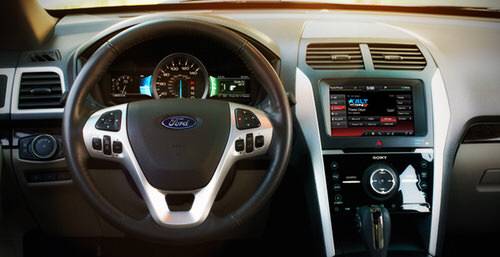
You’d think terrestrial radio would be at death’s door by now.
Just like written news, audio content is delivered much more effectively via the Internet than by traditional means. But FM radio is going strong and Internet services comprise only a tiny percentage of total listening time. Now, though, more and better in-car integrations are about to give Internet radio a huge shove into the future.
At the Consumer Electronics Show (CES) in Las Vegas this week, the partnerships are springing up left and right. Chrystler and GM are teaming up with iHeartRadio. Rhapsody is coming to new Ford cars. So is Amazon Cloud Player. Slacker Radio is integrating with Chrystler’s UConnect in-car entertainment system, which happens to be Pandora’s 19th such partnership as well.
Expect to see many more of these integrations between cars and digital media services. Not only are one-on-one formal partnerships becoming more common, but cars are becoming platforms for third-party app developers. Ford just launched an open-source software development kit (SDK) so apps can be built right into the steering wheel and dashboard. One of Ford’s technical partners is jacAPPS, an app development house with a long list of digital radio projects under its belt. “They’re people who understand radio, working on radio’s in-car future,” writes radio futurologist James Cridland.
Terrestrial radio isn’t sitting idly by, either. Clear Channel has been aggressively developing its iHeartRadio service, which is being built into more and more new cars. Meanwhile, NPR is already working with Ford Sync, Audi, Honda and Subaru, with several more partnerships with carmakers in the works for 2013.
Changing The Face Of Radio, V-e-r-y S-l-o-w-l-y
All of this is a big deal for Internet radio adoption. Americans do about half of their radio listening in the car. Connecting smartphones via auxiliary cables and Bluetooth is increasingly common, but the user interface remains clunky and jumping from app to app and queuing up Internet radio stations can be cumbersome – if not outright dangerous – while driving. That’s why Apple is working with car manufacturers to integrate Siri into the dashboard. It’s also why voice control is a central feature on Ford Sync.
These deals aren’t going to kill terrestrial radio overnight, or perhaps ever. After all, radio stations don’t crash or experience service outages like Internet apps and services too often do. And radio signals remain much more reliable than Internet connections, especially in moving vehicles. More to the point, though, while all of the new innovations are neat, new cars are expensive and the roads are filled with older ones that run just fine but don’t have the latest technology. It will be decades before technology like this exists in a majority of U.S. cars.
By bringing the most popular Internet radio and music streaming services directly to the dashboard, car manufacturers are making the user experience even more seamless – and crucially, putting more listening options at driver’s fingertips. It will be a slow process, but expect radio to sound more decidedly less old-fashioned as more connected cars fill the road.




















